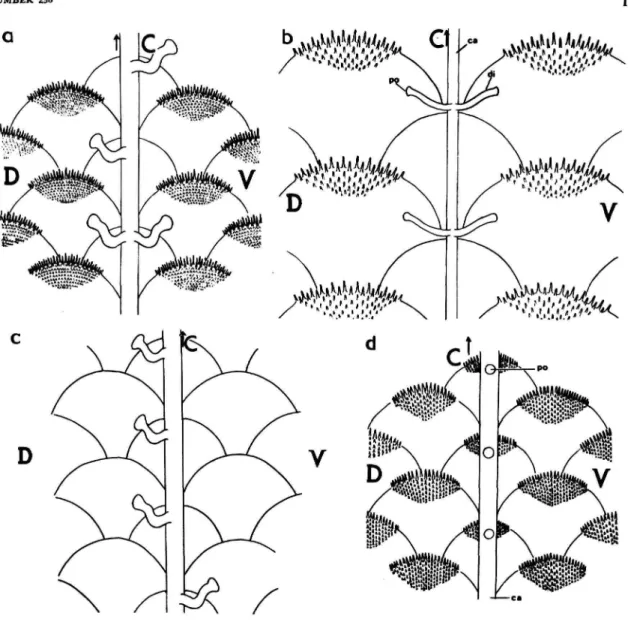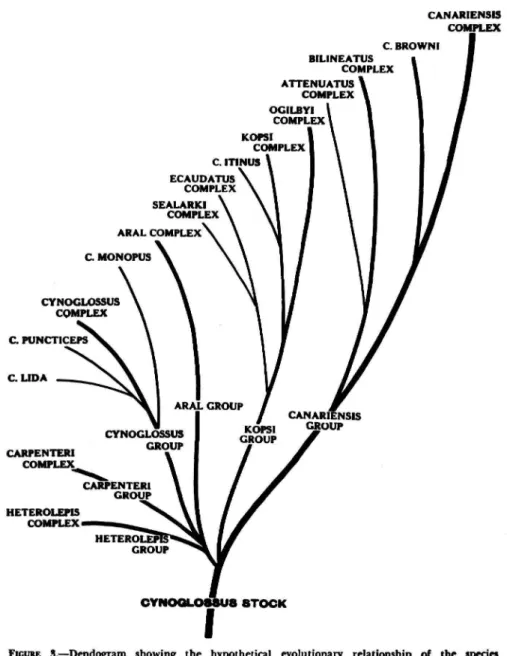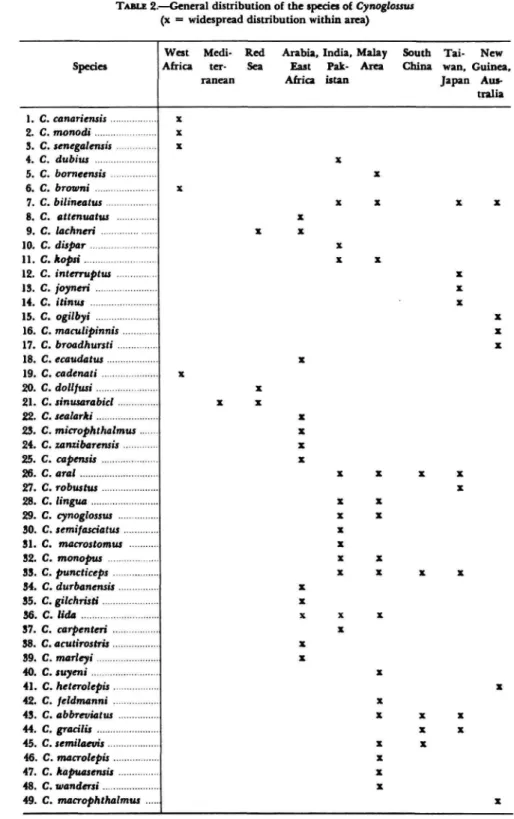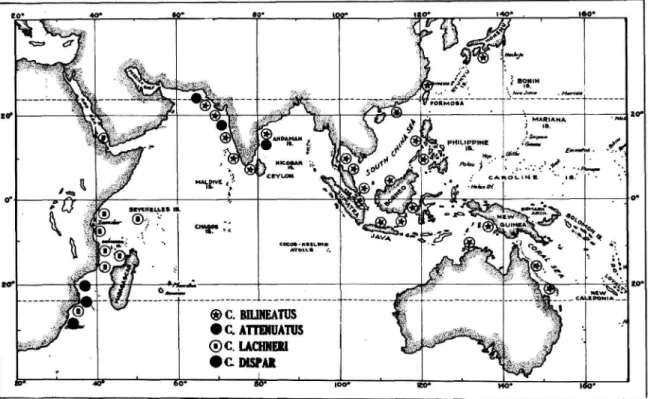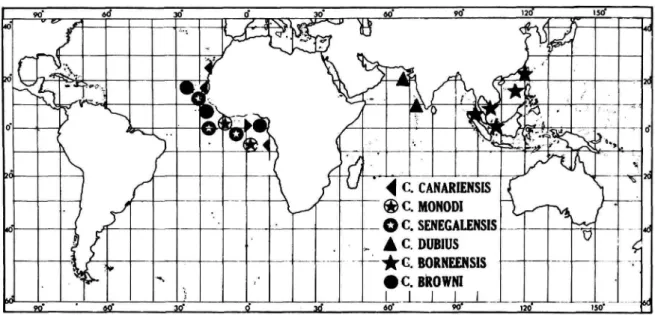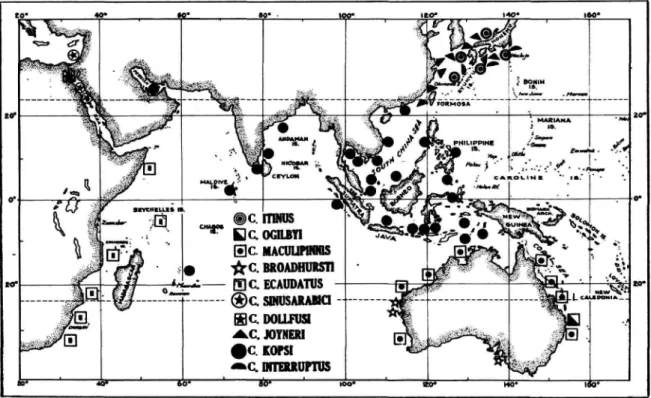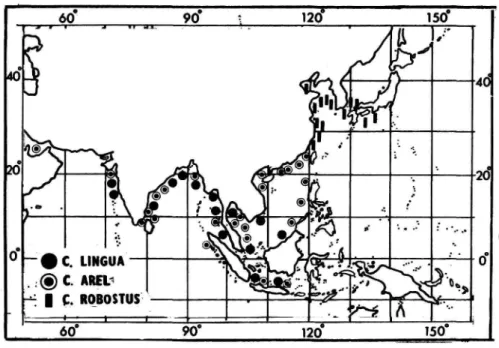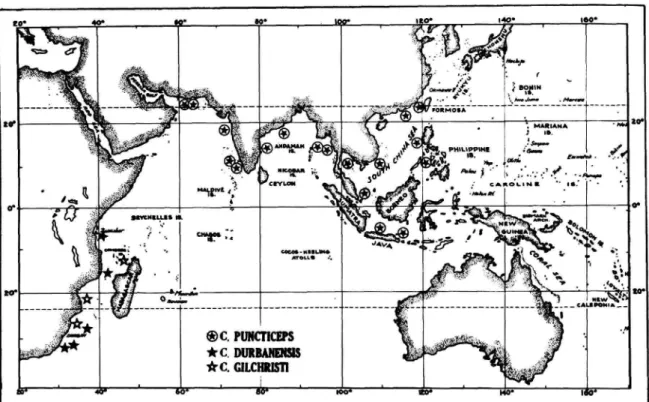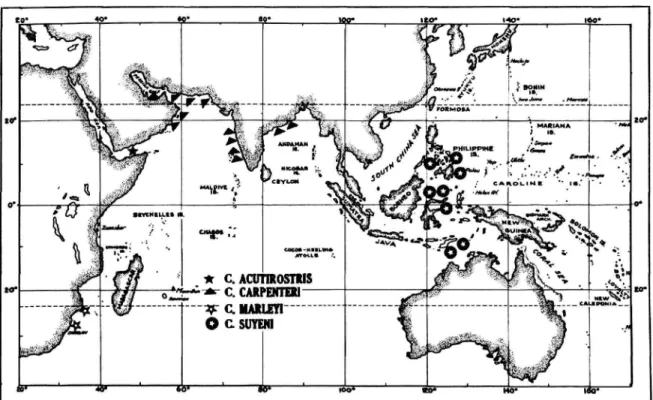Muzzle length: taken from the tip of the snout to the anterior edge of the fixed eye. This can be explained as a result of the relative development of the optic nerves in the two groups. On the blind side of the head, the lateral line system is poorly developed or completely absent.
The ovarian duct opens in the back half of the anus located on the blind side. In the first of the series (1951a) he briefly discussed the nature of the lateral line in C.
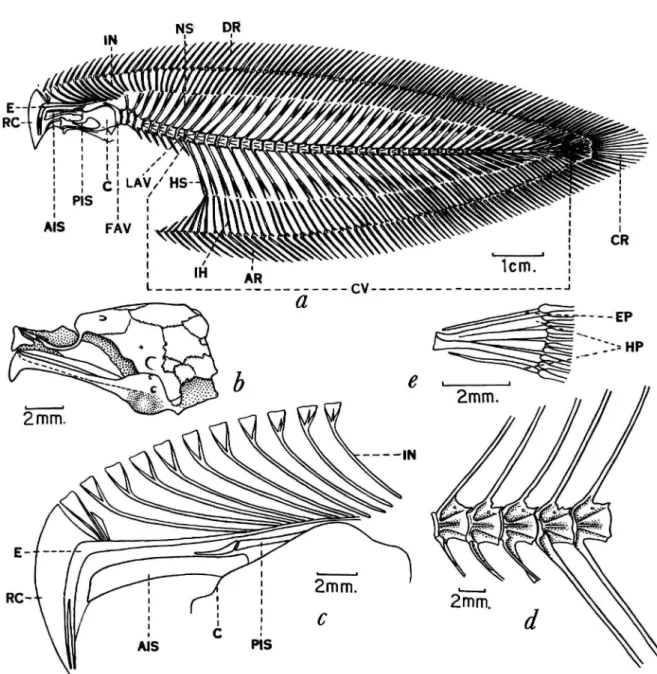
Cynoglossus borneensis (Bleeker)
Cynoglossus bilineatus, the only species of the bilineatus complex, is characterized by 12 rays in the caudal fin and two lateral lines on the blind side. Its main difference from the members of the canariensis complex of species is an additional lateral line on the blind side. DIAGNOSIS AND AFFINITIES.—In the number of two lateral lines on both sides of the body, C .
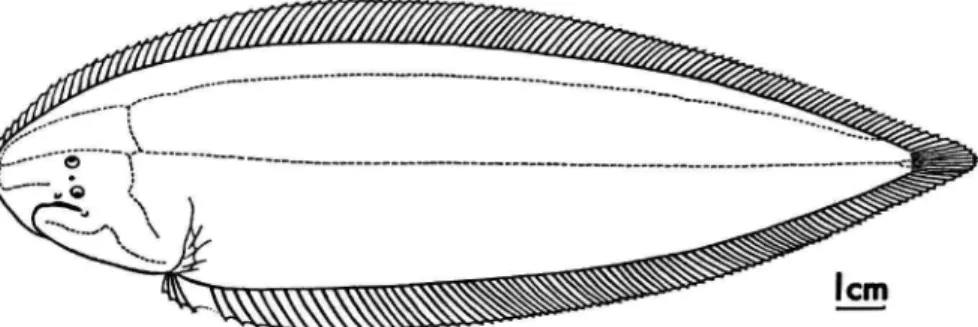
Cynoglossus interruptus Giinther
Scales: ctenoid on eye side, including lateral lines; on the blind side, the scales are cycloid on the head, slightly ctenoid on the body. With three lateral stripes, adjacent eyes, only one nostril and the ctenoid nature of the scales, C. Lateral stripe system: Two lateral stripes on the side of the eye, the dorsolateral line is incomplete, extending along the dorsal contour of the body, and the dorsal fin extends at the 31st dorsal ray, counted from behind, midlateral line with 66 scales and 8 scales between mid and upper lateral line.
Two nostrils on ocular side, anterior nostril, tubular in front under eye, posterior nostril in anterior part of interorbital space or immediately in front of eyes. Two nostrils on ocular side, anterior nostril tubular, in front of lower eye, posterior nostril single, in anterior half of interorbital space. Scales: Ctenoid on ocular side except lateral lines; scales of the blind side and scales of lateral lines on ocular side cycloid.
Two nostrils on the side of the eyes, the anterior nostril is tubular in front of the lower eye, and the posterior nostril is simple, directly in front of the eyes. Lateral line system: Two lateral lines on eye side, dorsolateral line ending at a point between middle and two-thirds of body length, mid-lateral line with 64-66 scales, 10-12 scales between middle and upper lateral line. Two nostrils on eye side, anterior nostril tubular in front of lower eye, posterior nostril simple, in anterior half of interorbital space.
Lateral Line System: Two lateral lines on the dorsal side, middle lateral line with 68-72 (M = 70) scales and 11-12 scales in between.

Cynoglossus dollfusi (Chabanaud)
In terms of the number of mesoscale rows, the number of anal and dorsal rays, and the number of vertebrals, these three species are very closely related. Cynoglossus cadenati, however, differs from both species in having a higher caudal ray count of 10, whereas the other species have only 8. It is conceivable that they evolved from a common ancestor in relatively recent times, when a possible connection between the Red Sea and the Mediterranean existed, which zoogeographically should not be earlier than the early Pleistocene.
As had been pointed out, there is considerable variation in the development of the lower lateral line among individuals of the same species of Cynoglossus (even of the same size), and the presence or absence of this line should not depend on species differentiation. Two nostrils on ocular side, anterior nostril tubular, in front of lower eye, posterior nostril single, in front of eyes. Lateral-line system: Only midlateral line present on ocular side with 54-60 scales, 11 scales from base of dorsal to midlateral line in center of body.
1 specimen, MNHP 1967-600a, 99.0 mm SL, which is selected here as lectotype, agrees well with the original description of the species. They appear to have descended from the same ancestral ancestor from which the copse complex of species evolved. Scales: Ctenoid on ocular side including those of lateral lines; scales on blind side cycloid anteriorly and ctenoid posteriorly.
Lateral line system: Three lateral lines on ocular side, midline with 64–66 scales, 10–11 scales between middle and upper lateral line in 3 specimens.
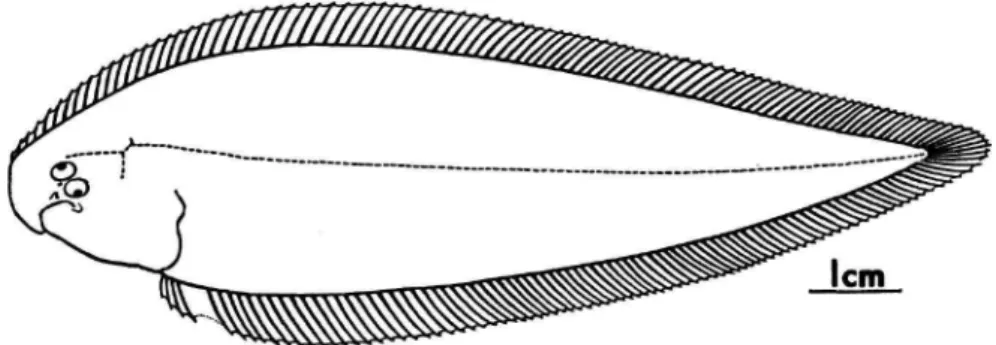
Cynoglossus microphthalmus (Bonde)
Two nostrils on the side of the eye, the anterior one tubular in front of the lower eye, posteriorly simple in the anterior half of the interorbital space. In the original description, the number of scale rows between the upper and middle lateral lines was not indicated, which in fact created the confusion in the identity of the species. Plagusia melampetalus Richardson (1846) is synonymous with C. arel, because from the characterization of the species in the original description, especially the indication that the two lateral lines on the left are separated by seven series of scales, the identity of the species is unmistakable.
Anterior nostril tubular, in front of lower eye, posterior nostril simple, in anterior half of interorbital space. This is a group of specialized species of Cynoglossus characterized by relatively small eyes (pedunculate in monopus) separated by a small interorbital space, a moderately elongated snout with the corner of the mouth closer to the tip of the snout than the degore opening ( except lida), two lateral lines on the ocular side and relatively small ctenoid scales on both sides of the body. Their combined range covers the entire Malay Archipelago, the seas of India and Pakistan, and the East Coast of Africa.
However, from the other details of the description, I have come to a definite conclusion that C. Cynoglossus cynoglossus does not appear in his book on the fishes of the Ganges (1822) either. Two nostrils on ocular side, close together in front of anterior margin of fixed eye, anterior nostril tubular, posterior simple.
DIAGNOSIS AND AFFINITIES.—Cynoglossus monopus occupies a rather isolated position in regard to the position of the nostrils, which are closely placed.
![Cynoglossus (Trulla) zanzibarensis Norman, 1939:105, fig. 36 [type-locality: Zanzibar, 183-293 m].—Nielsen, 1961:226 [off Durban, 430-595 m]; 1964:132 [off Durban, 230 m].](https://thumb-ap.123doks.com/thumbv2/123dok/11155172.0/64.865.190.681.578.941/cynoglossus-trulla-zanzibarensis-norman-locality-zanzibar-nielsen-durban.webp)
Cynoglossus puncticeps (Richardson)
Marley, an excellent example of the species, is here selected as the lectotype of C. Two nostrils on ocular side, anterior nostril tubular, in front below eye, posterior nostril single, in front of interorbital space. Lateral-line system: Two lateral lines on the ocular side, dorsolateral line more or less wavy, usually stopping at four-fifths of the length of the body and becoming indistinct; Midlateral line with 74–80 (M = 77) scales, 14–15 (M = 15) scales between them.
Cynoglossus lida, the only species forming the lida complex, is characterized by a broadly round prominent snout, the angle of the mouth being distinctly closer to the branchial opening than to the apex of the snout, and the rostral hook extending as far below the middle of the fixed eye. It is also characterized by the fact that the rictus of the mouth is much closer to the gill opening than at the end of the snout (average distance from the rictus in the mouth to the gill opening 46.55 percent of the head cf. 55.62 percent of the head). He characterized it as having two lateral lines on the left side separated by 13 series of scales and with the angle of the mouth closer to the gill opening than to the end of the snout.
In the rounded short snout, 10 rays in the caudal fin, and the rictus of the mouth, which is closer to the snout than the gill opening, C. Giinther gave the description of the species and characterized it as having three lateral lines, the middle and the upper separated by 19 series of scales, in which the height of the body is contained three and three-quarters of the total length, and the length of the head four times and two-thirds. In larger specimens, scales on the blind side appear more or less cycloid, especially on the anterior half of the body.
TYPE SPECIMENS. – Of the two specimens from China on which Gunther based his description of C.
![Ganges].—Day, 1877:437, pi. 97: fig. 2.—Alcock, 1889:289.—](https://thumb-ap.123doks.com/thumbv2/123dok/11155172.0/82.873.140.746.375.951/ganges-day-1877-437-fig-alcock-1889-289.webp)
Cynoglossus microlepis (Sleeker)
- Line system: three lateral lines on eye side, middle lateral line with 116-138 scales, 21-22 scales between middle and upper lateral line. DIAGNOSIS AND Affinities.—Cynoglossus micro-lepis is closely related to C. gracilis in most morphometric and meristic characters, but can be easily distinguished by the position of the migratory eye, which is placed well in front of the fixed eye. 37.52 percent) further separate the species from C. This has caused confusion as to the correct identity of the species, leading to the creation of several new ones.
Cynoglossus xiphoideus was described from two specimens, 150 and 229 mm in TL, from Thailand, characterized by three lateral stripes on the eye side, the upper and middle ones separated by 20 or 21 rows of scales, one on the blind side. with the interorbital space being larger than the orbital space and the upper eye being well in front of the lower. Smith considered the two species distinct; the main point of difference observed was a single prominent lateral line on the blind side in case C. The lateral line on the blind side is completely absent in all specimens examined, although the line shows a somewhat lateral line similar to the line on the blind side, which of course is not a pore.
Cynoglossus solum described by Sauvage (1878:92) from the Mekong River and characterized by having three lateral lines on the colored side, one on the blind side and 166 scales in the middle line was synonymized by Smith and I agree with him . This species is like the members of the heterolepis complex, except that only one (posterior) nostril is present on the ocular side. Snout rounded percent of head length, rostral hook long, reaching below posterior margin of fixed eye or just beyond.
Lateral line system: three lateral lines on eye side, middle lateral line with 100-103 scales, 17-18 scales between middle and upper lateral line.
Literature Cited
The flatfish (Heterosomata) of Ceylon with a list of the specimens in the Colombo Museum. A list of the fish collected from Echigo Province, including Sado Island (in Japanese). The Fiat-Fishes (Heterosomata) of India, with a list of the specimens in the Indian Museum.
